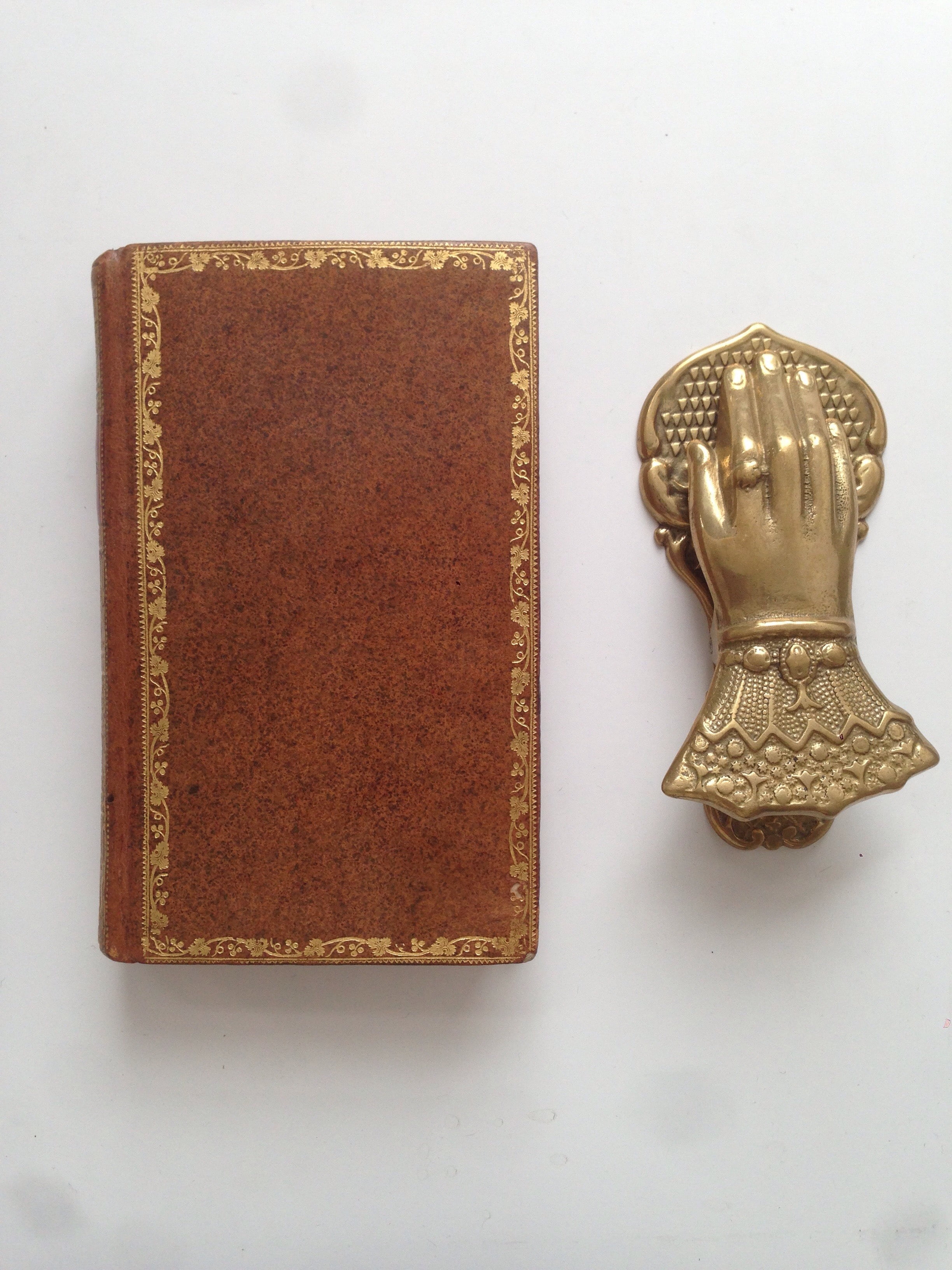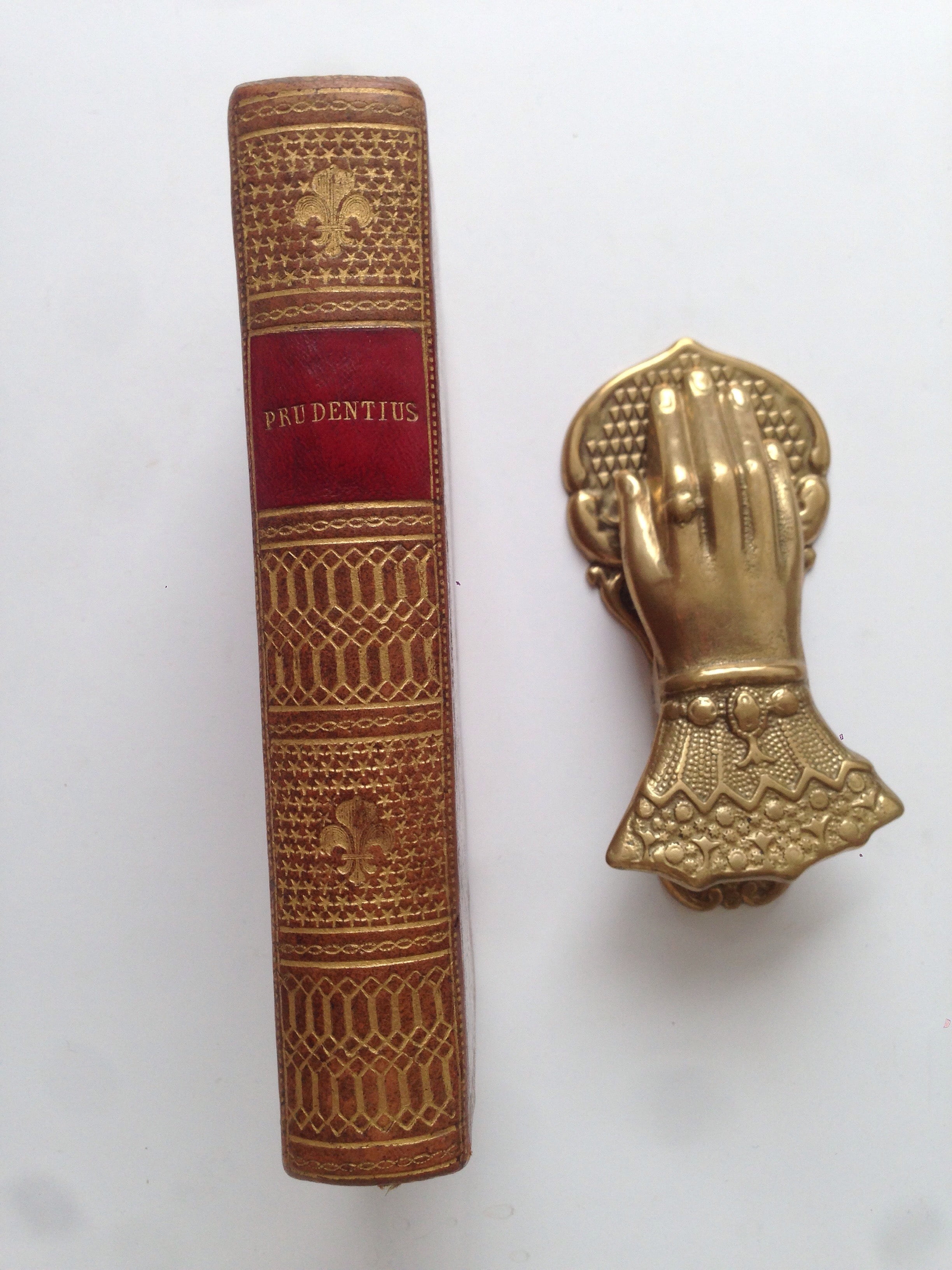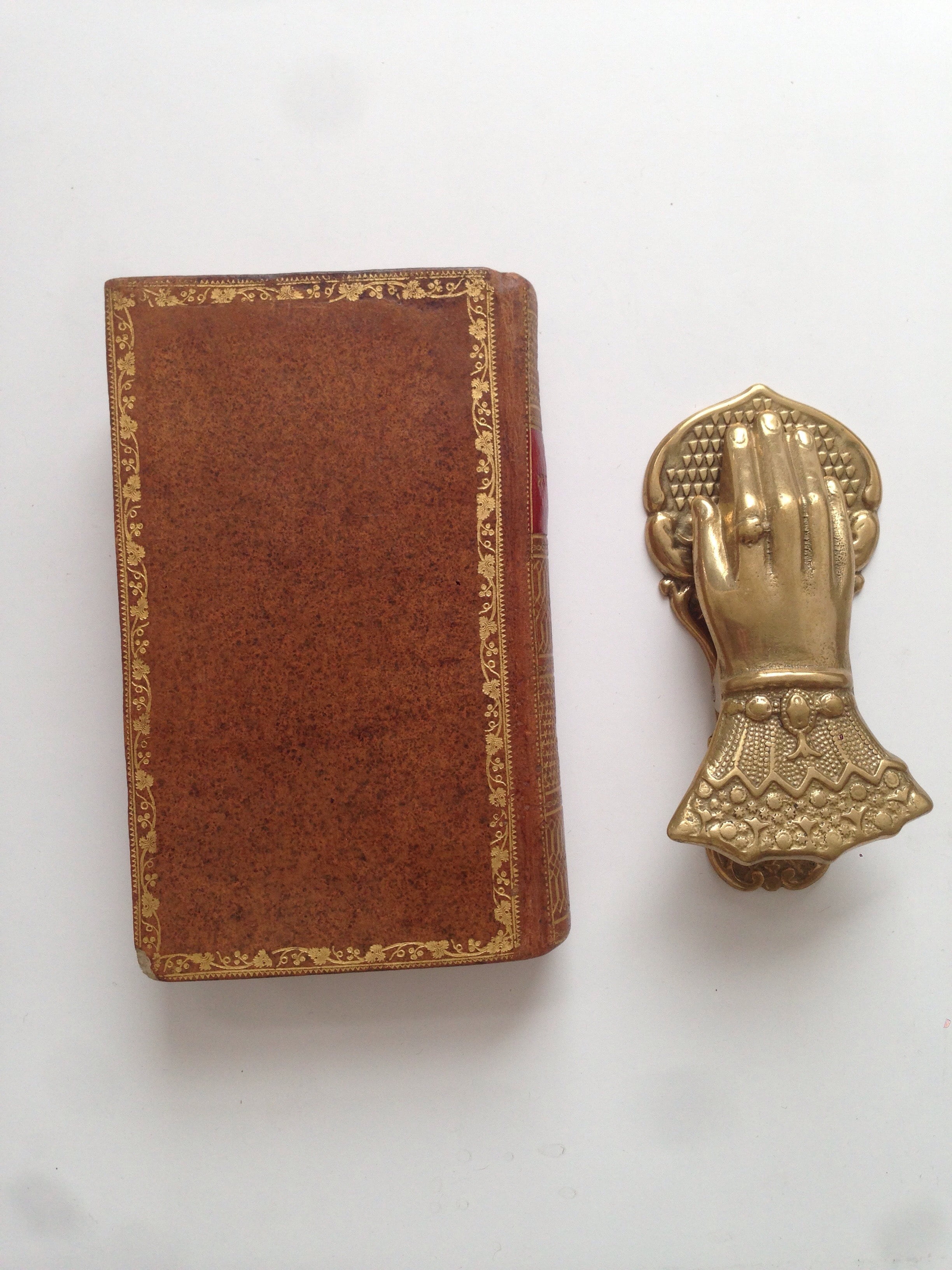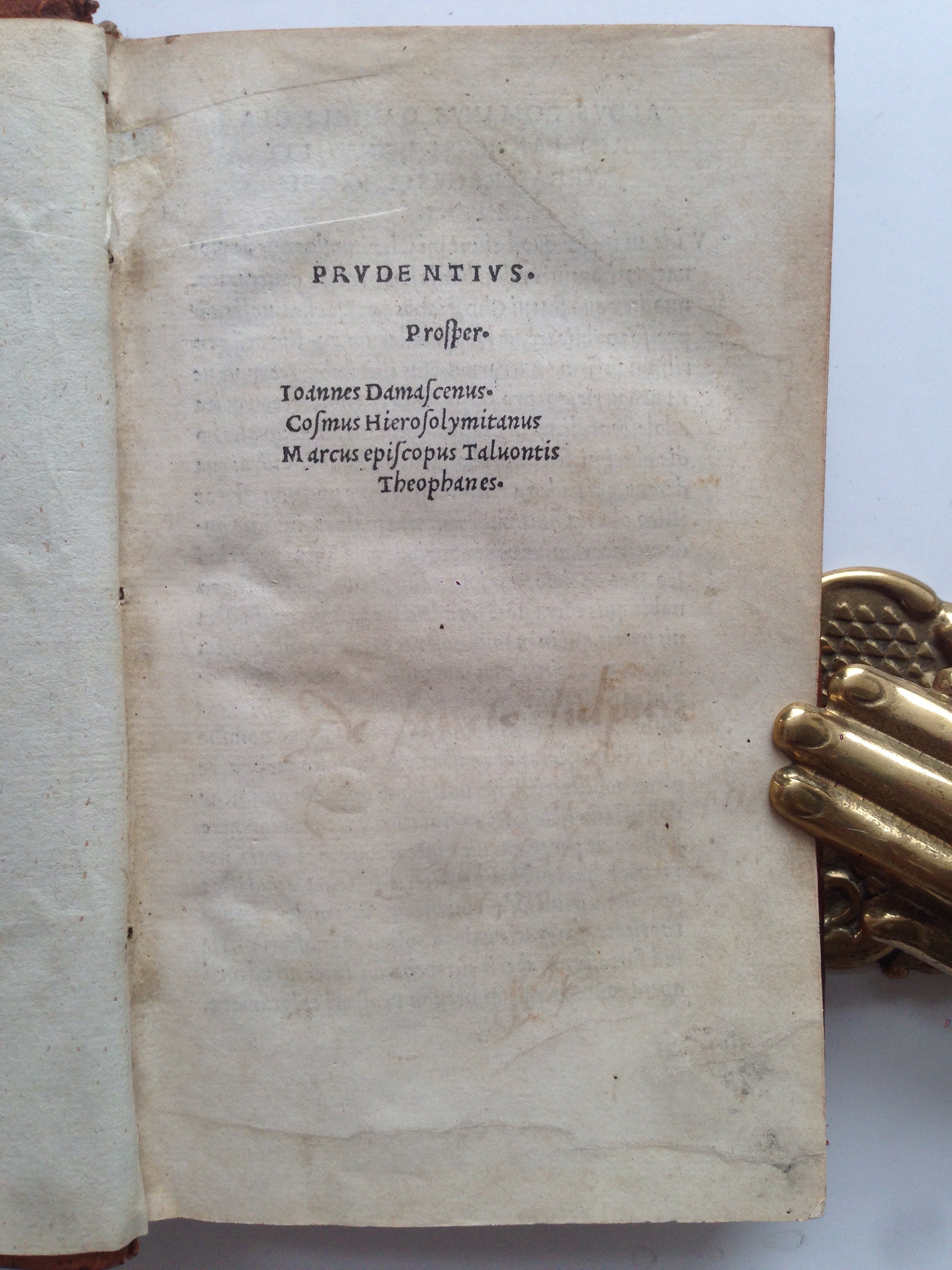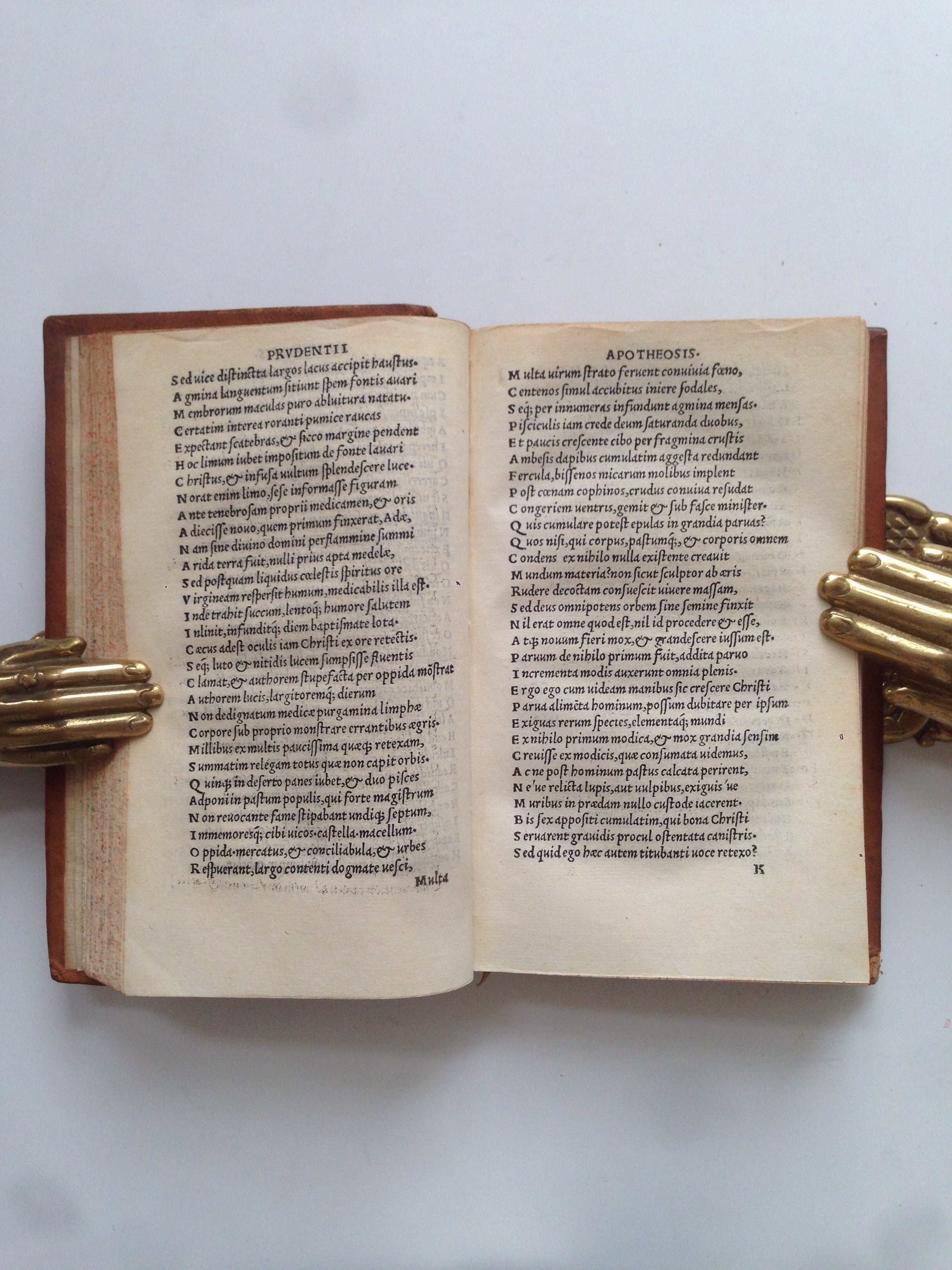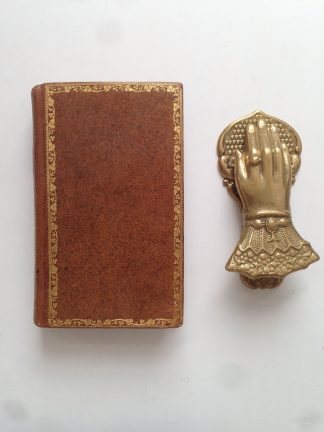PRUDENTIUS; PROSPER; IOHANNES DAMASCENUS; COSMUS HIEROSOLYMITANUS; THEOPHANES
Opera
n.pl. n. pr. n.d. [Lyon, Balthasar de Gabiano, 1502-03], 1502-03£3,950.00
8vo, ff. 266. Italic letter, a little Roman, blank spaces with guide letters for initials. Light age yellowing, the odd spot or mark, title page a little dusty, with old repair at foot. A very clean, crisp, fine copy in elaborately gilt tooled light brown speckled calf C1800, gilt title to spine, all edges sprinkled red and green, slightly rubbed; La Motte-Belair armorial bookplate C1800, and another modern on front pastedown, partly faded early inscription – “De sancto Sulpicio” – on title page.
A rare counterfeit of the first volume of the collection “Poetae christiani veteres”, published by Aldo between 1501 and 1504. It demonstrated Aldo’s interest in explaining different Latin and Greek texts, many of which were neglected and inaccessible. This Lyonese edition was listed in the “Monitum in Lugdunenses” (March 1503), where Aldo denounced the counterfeits as incorrect for the sake of buyers and to defend himself. This counterfeit differs textually from the real in the abbreviated title, the absence of Aldo’s address to the reader, errata, register and colophon. The counterfeit opens with a prefatory letter to the scholar Daniele Clario, where Aldo explains that he had to use a manuscript of British provenance (“ab usque Britannis accitus”). It comprises works by the Latin poet Prudentius, Prosper of Aquitaine (Epigrammata) and the Greeks John Damascus, Cosmas of Jerusalem and Theophanes (hymns).
Aurelius Prudentius Clemens (c348 – 405AD) was born in the Roman Province of Terraconensis (Northern Spain) of a distinguished Christian family. He studied law and was twice provincial governor. Around 392 he retired from public life to became an ascetic. Prudentius was one of the best known representatives of the Christian humanism and an apologist of Christianity. His works, which he collected in 405 with a brief preface, were inspired by Tertullian and St. Ambrose, by the Bible and the Acts of the Martyrs. His earliest poems are the 12 hymns of the Cathemerinon, devoted to the sanctification of the hours of the day or important occasions (Christmas, the Epiphany, etc.). The Peristephanon celebrates Spanish and Roman martyrs (Lawrence the Deacon, the 18 martyrs of Saragossa, Cassianus of the Forum Cornelium, Peter and Paul, Cyprian, Agnes and many others) and may have been influenced by Pope Damasus’ inscriptions. Apotheosis in 1408 hexameters, is a theological exposition on the dogma of Trinity and the deity of Christ, directed against its opponents. Hamartigenia in 966 hexameters, deals with the origin of the sin and the punishments of heresy, in a polemic against gnostic dualism. Contra Symmachum in 2 books, is a invective against pagan state religion and contains a refutation of the senator Symmachus’ plea for reinstating of the altar of Victory in the Senate house at Rome, which had been removed in 357. The Psychomachia (915 hexameters) and the Dittochæon are two works of aesthetic and historical interest. Psychomachia is the first completely allegorical poem in European literature and describes the conflict between Christian virtues and heathen vices. The second is composed of 49 quatrains, intended as captions for the decoration of a basilica in Rome: 24 Old Testament pictures on one side and as many from the New Testament on the other, plus one in the apse. Prosper of Aquitaine (c390 – 455 AD) was a dedicated disciple of Saint Augustine of Hippo. Born in Aquitaine, he moved to Marseilles, where he became involved in the semi-Pelagian controversy. He spent his last years in Rome working for Pope Leo the Great. His Epigrammata are a collection of 106 poems on sayings taken from Augustine’s works, mainly concerning the doctrines of grace and incarnation, and probably written after the Council of Chalcedon. Revealing a familiarity with Virgil, Ovid and Lucretius, they provided a convenient means for students of learning moral lessons and elements of Augustinian doctrine. John of Damascus was one of the Fathers of the Greek Church. He was of a good family and educated by the elder Cosmas with his foster-brother Cosmas the Melodist. He held e offices under the Caliph and afterwards retired to Mar Sabas monastery, near Jerusalem, along with his foster-brother. There he composed his theological works and hymns and lived to extreme old age. The most common source of information for the life of John of Damascus is a work attributed to one John of Jerusalem, identified as the Patriarch of Jerusalem. It was during John Damascus’s office that the Eastern Orthodox church began to be agitated by the Iconoclast heresy. John of Damascus, Cosmas of Jerusalem and Theophanes (c759-818 AD) were the most prolific later Greek classical hymnographers, and wrote hymns in iambic trimeters on the Nativity, Epiphany, on the Palm Sunday, on Easter and Pentecost, etc. They were originally composed for the Office of the Church of Jerusalem and are still used in Eastern Christian practice.
A very appropriate provenance, Saint Sulpice (founded 1641), during the Directoire was renamed and used as the Temple of Victory and later taken over as the headquarters of the “Club de la Victoire” during the Commune. It is also one of the grand historic churches of Paris, Victor Hugo married there, Madame de Montespan was buried there and the Marquis de Sade baptised there. It was sacked during the Revolution, doubtless when this copy was lost.
Only 5 copies recorded in the US (Dartmouth College; Boston College; Catholic University of America, Washington; Stanford University and Columbia). Adams, P 1686; Baudrier, VII, 8-9; BM STC Fr., 367; Brunet, IV, 915; Renouard 306:5; Shaw, The Lyons Counterfeit of Aldus’ Italic type, 124:10. Not in Ahmanson-Murphy.In stock


